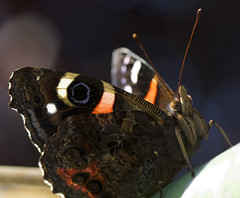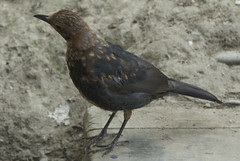Eric Spurr, the project coordinator, told us the following about last year's survey.
Silvereye returned to the top of the table of species counted in greatest numbers, with house sparrow second, starling third, and blackbird fourth. A grand total of 187,858 birds were counted in 4193 gardens (an average of nearly 45 birds per garden). This included 55,543 silvereyes, 52,779 house sparrows, 11,837starlings, and 11,156 blackbirds. These species have been the top four in all four years of the survey. As in previous years, the only other native species apart from silvereye to make the top 10 were tui and fantail.
These annual surveys are a useful way to document which birds are using our gardens and how our bird communities are changing.
Instructions and a summary of past years' findings can be found at the New Zealand Garden Bird Survey. The results of the past bird surveys are all available through NZBRN (Eric is still following up on some unusual observations in the 2010 data).
If you miss this survey or get enthused about documenting the birds using your garden at other times of the year, you can store and share your garden observations on NZBRN at any time (and not just of birds but also other animals, plants, and fungi). If birds and only birds are your thing, another good web option is eBird.



